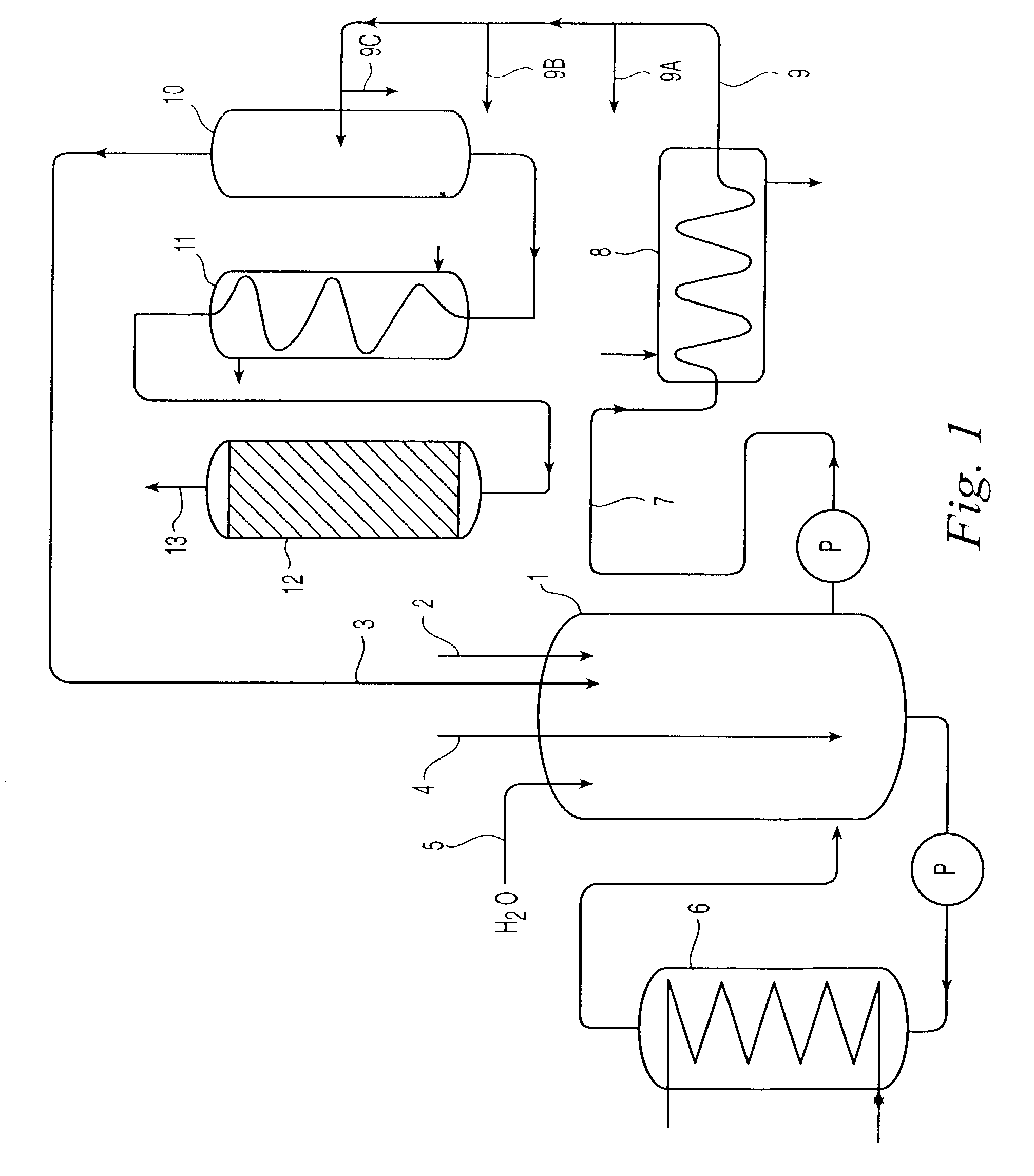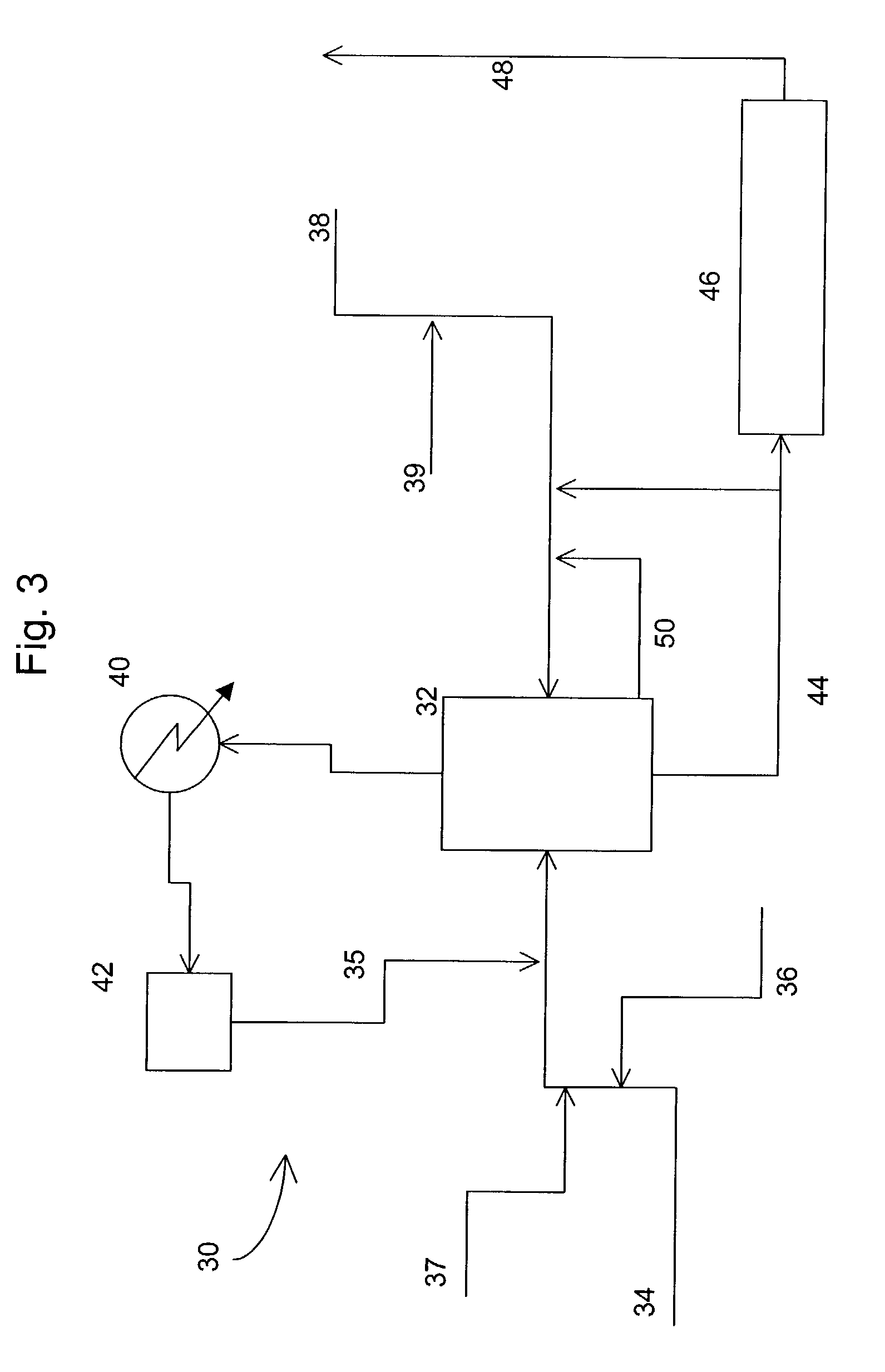Decomposition of cumene oxidation product
a technology of cumene and oxidation product, which is applied in the preparation of carbonyl compound, carbonyl compound by hydrolysis, organic chemistry, etc., can solve the problems of reduced phenol yield, less stable operation of the reactor, and opportunity for large thermal energy release, etc., to achieve stable and economical manner, high yield
- Summary
- Abstract
- Description
- Claims
- Application Information
AI Technical Summary
Benefits of technology
Problems solved by technology
Method used
Image
Examples
example 1
[0052]A cumene oxidation product that contained 81.6 weight percent CHP, 5.00 weight percent DMPC and 0.40 weight percent acetophenone, the balance being mostly cumene, was pumped at the rate of 1.62 g / min into a thermostated pyrex Morton flask equipped with magnetic stirring and an overflow device that maintained the volume of the reaction mixture at 30 mL. Simultaneously, an acetone solution containing 0.86 weight percent AMS, 2.06 weight percent phenol, 5.83 weight percent cumene, 1.60 weight percent water and 0.0512 weight percent sulfuric acid was pumped into the reactor at the rate of 0.230 g / min. The composition of the acetone solution, except for the acid content, corresponded to that of a flash distillate that could be obtained from the product of the reaction. The acetone added was equivalent to approximately 40 percent of the acetone produced during the reaction. The acid content was calculated to maintain 80 ppm in the reaction mixture. The residence time in the reactor ...
example 2
[0059]FIG. 3 is a simplified schematic diagram of a decomposition of cumene oxidation product system 30. The system includes a first reactor 32 operating with an adjustable reactor level; a condenser 40 and reflux acetone collection vessel 42; and a second reactor 46 for DCP dehydration having plug flow conditions and an elevated temperature, which produces decomposition product mixture stream 48.
[0060]First reactor 32 is a continuously stirred, tank reactor, and is fed by cumene oxidation product stream 34, recycle acetone stream 35, sulfuric acid feed stream 38, and water feed stream 36. Water is added in an amount of up to about 10% by weight of the reaction mixture. Typical operating conditions for reactors of this design are depicted in Table 2 below, though these conditions can vary substantially from reactor to reactor depending on the processing plant's design and system tolerances. Otherwise, the reaction conditions in first reactor 32 are similar to those described in refe...
PUM
| Property | Measurement | Unit |
|---|---|---|
| temperature | aaaaa | aaaaa |
| temperature | aaaaa | aaaaa |
| temperature | aaaaa | aaaaa |
Abstract
Description
Claims
Application Information
 Login to View More
Login to View More - R&D
- Intellectual Property
- Life Sciences
- Materials
- Tech Scout
- Unparalleled Data Quality
- Higher Quality Content
- 60% Fewer Hallucinations
Browse by: Latest US Patents, China's latest patents, Technical Efficacy Thesaurus, Application Domain, Technology Topic, Popular Technical Reports.
© 2025 PatSnap. All rights reserved.Legal|Privacy policy|Modern Slavery Act Transparency Statement|Sitemap|About US| Contact US: help@patsnap.com



